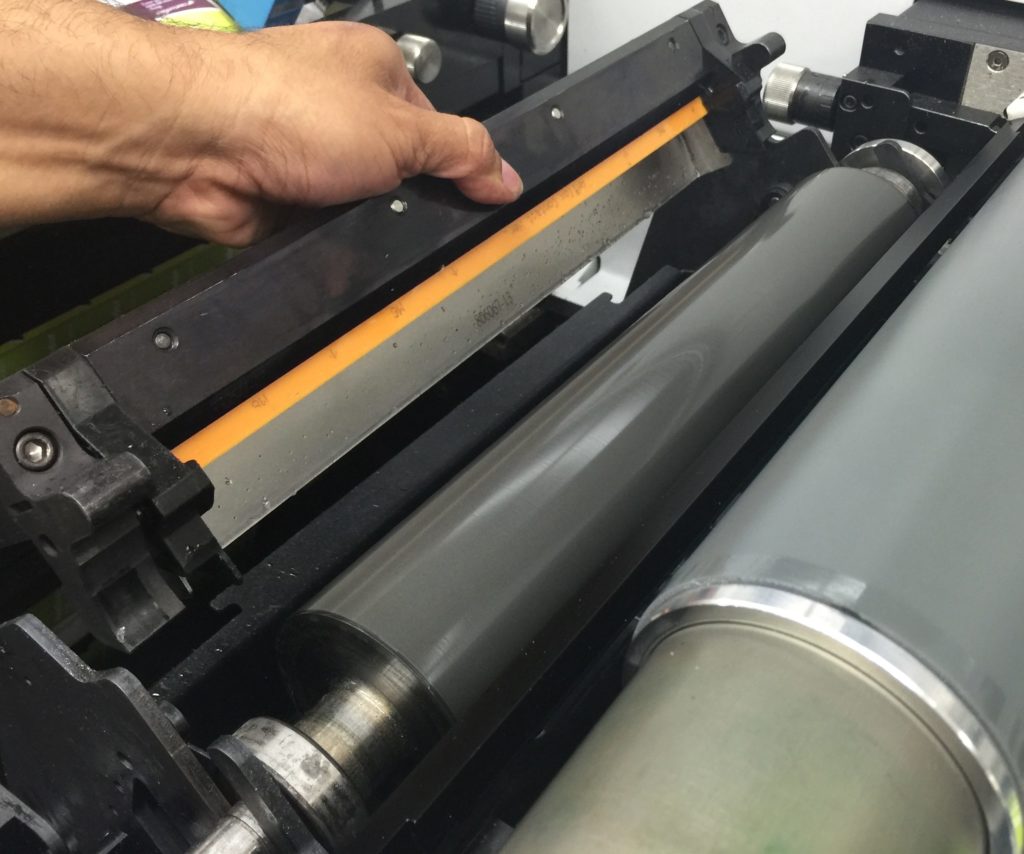Flexography
Back
Flexography (often abbreviated to flexo) is a form of printing process which utilizes a flexible relief plate. It is essentially a modern version of letterpress
which can be used for printing on almost any type of substrate,
including plastic, metallic films, cellophane, and paper. It is widely
used for printing on the non-porous substrates required for various
types of food packaging (it is also well suited for printing large areas
of solid colour).

1. Fountain roller
The fountain roller transfers ink located in an ink pan to a second roller, an anilox roller.
In modern flexographic printing, the anilox roll is referred to as a type of meter or metering roller.

2. Anilox roller
The anilox roll is a unique characteristic of flexography. The anilox
roller transfers a uniform thickness of ink to a flexible printing
plate. The anilox roll has finely engraved cells with a particular ink
capacity, viewable with a microscope. These rollers are responsible for
transferring inks to the flexible printing plates mounted on the plate
cylinders.

3. Doctor blade (optional)
An optional doctor blade
scrapes the anilox roll to ensure that the ink to be delivered to the
flexible printing plate is only what is contained within the engraved
cells. Doctor blades had predominantly been made of steel, but advanced
doctor blades are now made of polymer materials with several different
types of beveled edges.

4. Plate cylinder
The plate cylinder holds the printing plate, which is made from a soft
flexible rubber-like material. Tape, magnets, tension straps and/or
ratchets hold the printing plate against the plate cylinder.
5. Impression cylinder
The impression cylinder applies pressure to the plate cylinder
where the image is transferred to the image-receiving substrate.
This impression cylinder or "print anvil" is required to apply pressure
to the plate cylinder.
No comments:
Post a Comment